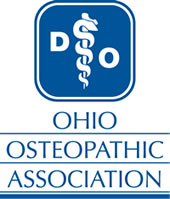October 2025 Advocacy Update
The OOA brings advocacy directly to members through ongoing engagement and by investing in a government relations firm to represent osteopathic interests at the Statehouse. Our members power this work. Membership dues support and sustain a strong advocacy program, ensuring doctors have a voice in policy decisions. OOPAC backs pro-osteopathic candidates on both sides of the aisle who champion the issues DOs care.
Advocacy Report
Daniel Hurley
Lobbyist, Barnes & Thornburg Strategies
The Ohio General Assembly will maintain a steady workload through the end of the year with a break for Thanksgiving and winter recess just before the Holidays. We anticipate a busy fall for OOA with several notable pieces of legislation seeing action and our 2025 DO Day at the Statehouse event. Key tracked bills are as follows—
- House Bill 353 (Lampton, Manning): OOA is concerned over HB 353, which would change the title of physician assistants to physician associates. The bill has received a hearing in the House Health Committee and could see further consideration this year.
- Senate Bill 25 (Dr. Johnson): OOA is supportive of SB 25, which would restrict sunlamp tanning usage for minors. While versions of this bill have been debated at the statehouse for more than a decade, we may finally be close to getting this version enacted.
- Scope of Practice Bills: We are also monitoring several bills that would modify the scope of practice for various allied health professionals including: HB 52 (CRNA’s), SB 36 (Optometrists), SB 230 (Pharmacists), and HB 449/SB 258 (APRN’s).
While state lawmakers of both parties agree that property taxes are becoming a challenge for many Ohioans, there is little consensus on potential legislative remedies. Statehouse Republicans have introduced several pieces of legislation that would reduce property tax rates, overhaul county-level oversight of tax levies, and refund levy carryover funds to taxpayers. As previously noted, some of these items were included in HB 96 and subsequently vetoed by Gov. Mike DeWine; lawmakers might also consider veto override votes this year. Some of the impetus for consideration of property tax legislation is a potential citizen-initiated ballot effort that would repeal all property taxes in Ohio; voters could see the measure on the November 2026 ballot.
Property taxes are a key funding source for many local government entities providing health care to Ohio citizens including ADAMH and DD Boards, Health Departments, and County Hospitals. Further, the largest recipients of property tax revenue are public schools. While Ohio’s current property tax system is complex and often confusing for voters, it generates more revenue per year than the state income and sales taxes combined. OOA will continue to monitor the debate around property taxes in Ohio as it could impact DO’s and the patients you serve.
Ohio Department of Medicaid Director Maureen Corcoran announced her departure effective October 31st. During her tenure, Corcoran oversaw a redesign of the Medicaid Managed Care program, rate increases for physicians, and reforms to prescription drug access and prescribing requirements. It is not uncommon for Cabinet Directors to depart as a Gubernatorial Administration approaches the end of its tenure; Ohio Department of Behavioral Health Director LeeAnne Cornyn also announced she will depart the DeWine Administration before the end of the year.
Lastly, on the political front, the Ohio Redistricting Commission will soon convene to redraw Congressional maps in advance of the 2026 Midterm Election in Ohio. This process is required under a 2018 voter-approved amendment to the Ohio Constitution that reformed the mapmaking process. While the goal of the 2018 reform was to make the redistricting process more bipartisan, Republicans are expected to adopt maps that will make Democratic-held seats in the 9th (Kaptur) and 13th (Sykes) Districts more competitive.



